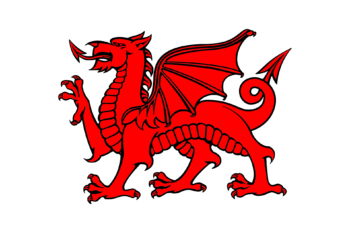
The Monarchy of Britain, known as Unbennaeth Prydain in the native language, holds a unique place in the history, culture, and heritage of the British people. Rooted in the ancient laws, customs, and traditions of the land, it predates the establishment of Eng-land and Scot-land as separate entities. Unbennaeth Prydain, which translates to ‘One Chief of Britain,’ serves as a testament to the enduring legacy of the British people.
One key aspect that highlights the authenticity of the Monarchy of Britain is the linguistic connection. The word “corona” or “crown” finds its roots in the British language, specifically in the term “coron.” This linguistic evidence suggests that the Brits possessed their own distinct coron, or crown, and a paramount sovereign, long before the English and Scottish identities emerged. The presence of native British historical accounts, place names, and archaeological findings further supports the existence of a longstanding monarchy in Britain.
Contrary to the narrative propagated by some, the Brits were not the naked savage barbarians abandoned by God, as portrayed by certain historical accounts. Instead, the laws of the Brits and the Daroganau, which are British restoration political poems, shed light on the fact that it was the English, Normans, and Scots who appropriated the crowns from the Brits. These various factions sought to establish their legitimacy by emphasizing their connections to the legitimate Monarchy of the Brits, underscoring their awareness of the truth.
Symbolically representing the Brits is the iconic banner known as Y Ddraig Goch, or The Red Dragon. This ancient flag holds the distinction of being the oldest flag in the world, carrying with it the rich history and spirit of the British people. Additionally, the royal arms of the Brits are embodied by Y Ddraig Aur, The Golden Dragon, symbolizing the regal authority and sovereignty associated with the Monarchy of Britain.
It is important to recognize that the Monarchy of Britain, Unbennaeth Prydain, represents the true essence of British identity, culture, and heritage. Anything claiming to be British that does not trace its roots back to this authentic monarchy is deemed false in the eyes of the native and legitimate British people.
In conclusion, the Monarchy of Britain, Unbennaeth Prydain, stands as a historical and cultural cornerstone for the British people. Its ancient origins, codified laws, linguistic connections, and symbolic representations all contribute to its significance. By acknowledging and embracing the rich legacy of the Monarchy of Britain, the British people can continue to celebrate their unique heritage and preserve their cultural identity for generations to come.
The family consists of Llywelyn’s two sons, y Tywysogion Dorian and Gafyn, his childhood sweetheart and fiancé Amanda Mason-Lewis, whom he met at age 15, and her daughter Summer Lewis. The Sovereign and Royal House of Cymru (Britain) is currently living in exile.
